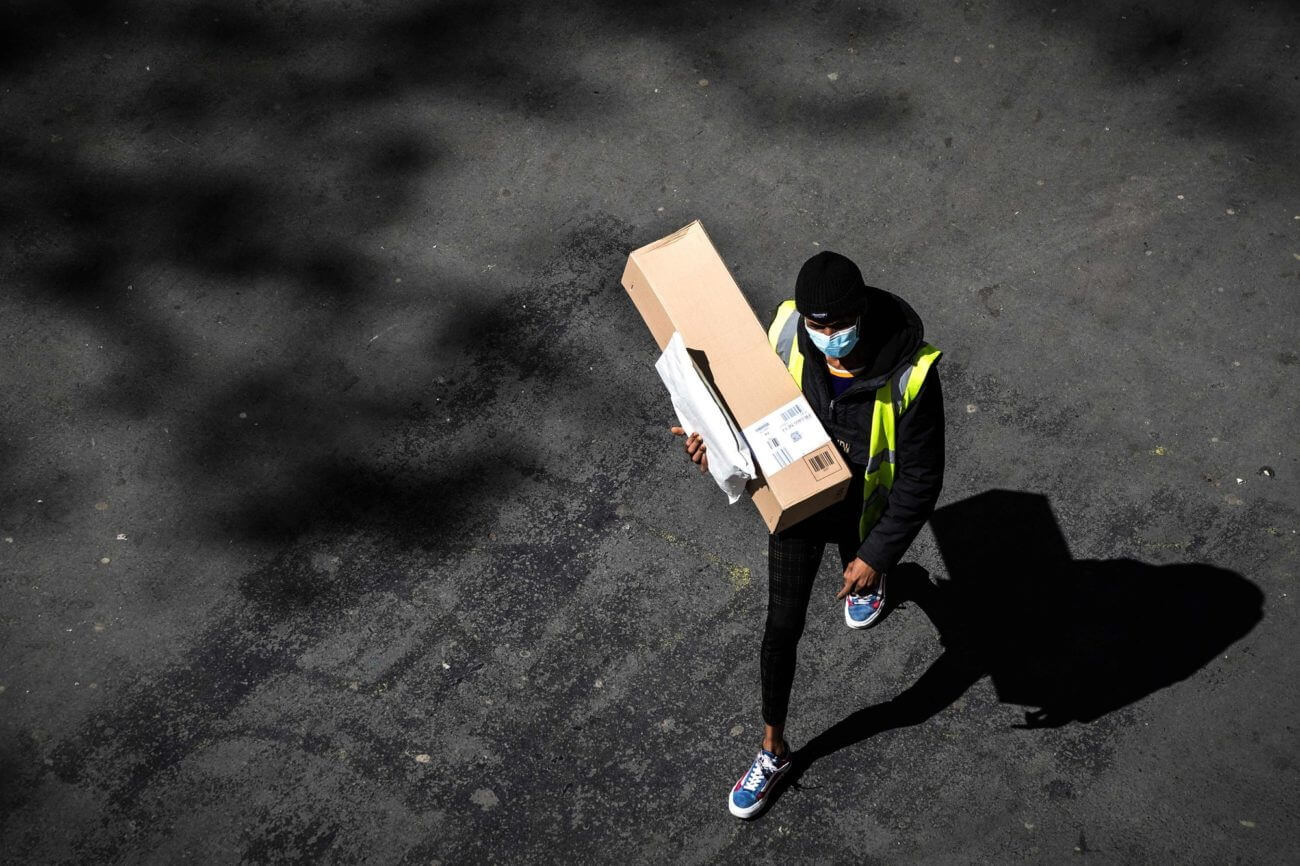
Coronavirus has given analysts plenty of reasons to be ultra-bullish on Amazon stock. But Jeffries’ target is overly optimistic, not to mention unrealistic. | Image: JOEL SAGET / AFP
- Jefferies Group revised its target for Amazon stock upward. It now has a very bullish forecast of $4,000 a share by the year 2023.
- Amazon has remained a truly remarkable success story straight through the coronavirus pandemic and fastest equities crash in history.
- But the 2023 price target, and a $2,800 target for next year, make a fatal assumption few analysts share as the economy shrinks.
Amazon (NASDAQ:AMZN) stock has enjoyed a meteoric rise while other companies stagger through the coronavirus pandemic and worldwide lockdowns. The online retailer was in a unique position to actually profit from people staying home en masse.
But will the growth continue?
Morgan Stanley believes Amazon stock has already priced in the company’s advantage in the pandemic economy. Its investment management arm recommends taking profits now.
Meanwhile, others such as billionaire investor Mark Cuban, expect a permanent boost to Amazon’s inflows. After the pandemic subsides, they expect consumers to stick with their new buying habits. In other words, they’ll continue restocking pantries through Amazon instead of driving to a local or chain grocery store. So Amazon stock will continue to rise.
Jefferies Group Targets $4,000 AMZN
Jefferies Group is among the AMZN bulls. The $44 billion Wall Street investment bank hiked its 12-month price target for Amazon stock Tuesday. Jefferies expects AMZN to trade at $2,800 per share by April 2021. That would be a 20% rally over Monday’s closing price of $2,328.12 per share.
Jefferies equity analyst Brent Thill said in a client note Tuesday:
We believe AMZN is a potential beneficiary of COVID-19, as consumers limit exposure to crowded places and order more in nascent categories like grocery, positively influencing long-term purchase behavior.
But over the longer term, Jefferies sees Amazon stock reaching $4,000 per share by 2023. The firm says by then Amazon’s cloud business will be its most valuable asset.
Although it’s currently the most bullish projection on Wall Street, there’s certainly merit to Jefferies’ Amazon stock outlook. Amazon has been remarkably more-than-resilient amid a global pandemic and worldwide stock market crash. It’s just the latest development in one of the most magical stories in business and technology. But here’s why $4,000 is a little high.
Jefferies Group’s AMZN target makes sense if there wasn’t a protracted bear market ahead. Certainly, their analysis makes a compelling case for why Amazon stock has advantages against other stocks. But just as “a rising tide lifts all boats,” Amazon faces the massive headwind of a broad correction in valuations amid a prolonged, deep recession.
We’re In For a Long Equities Bear Market
Leading economists from the IMF’s Gita Gopinath to Rosenberg Research & Associates’ David Rosenberg see something worse than the 2008 financial crisis in store for the economy. Not one to mince words, Rosenberg says, “this economic damage could be double 2008.” A 20% rally on top of Amazon’s current, already-bullish share price is an audaciously bold target. Embedded in that forecast is a fatal assumption.
Jefferies economists actually assume we’re not heading for a recession:
We do not appear to be heading for a normal recession, and the U.S. Economics team does not currently forecast a recession this year.
So anyone who agrees that there won’t be a U.S. recession this year might find a $2,800 price target for Amazon stock by next year within reason. But who other than Jefferies seriously thinks there won’t be a recession? Instead, the question for most economists is whether this will be a recession or a depression.
The Chicago Federal Reserve’s data say we already entered a recession in March. The White House said Tuesday the U.S. might post its biggest-ever second-quarter decline in GDP. There are over 22 million unemployed in the U.S. today. Bond yields remain at historic lows. A barrel of oil is now cheaper than a bottle of Coke.
Amazon stock may be pandemic-proof, but it’s not recession-proof. When the NASDAQ bubble crashed, AMZN lost 90% of its market value over two years. Amazon’s share price didn’t crash so spectacularly during the 2008 financial crisis, but neither did it rally 20% in a year.
Disclaimer: The opinions expressed in this article do not necessarily reflect the views of CCN.com. The above should not be considered investment advice from CCN.com. The author holds no investment position in Amazon shares at the time of writing.
This article was edited by Sam Bourgi.






